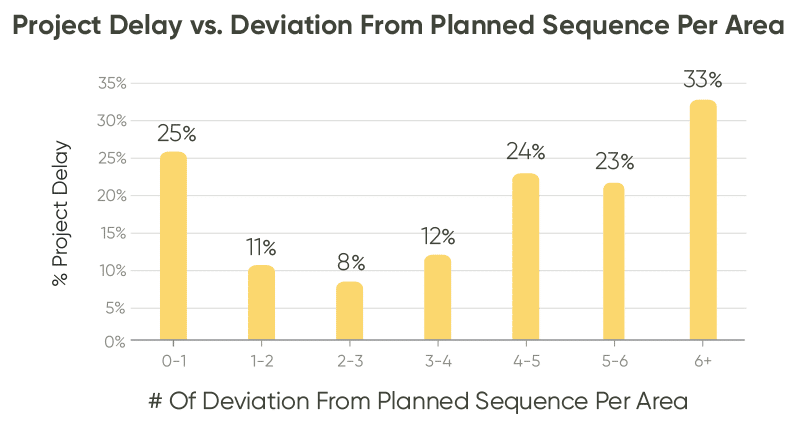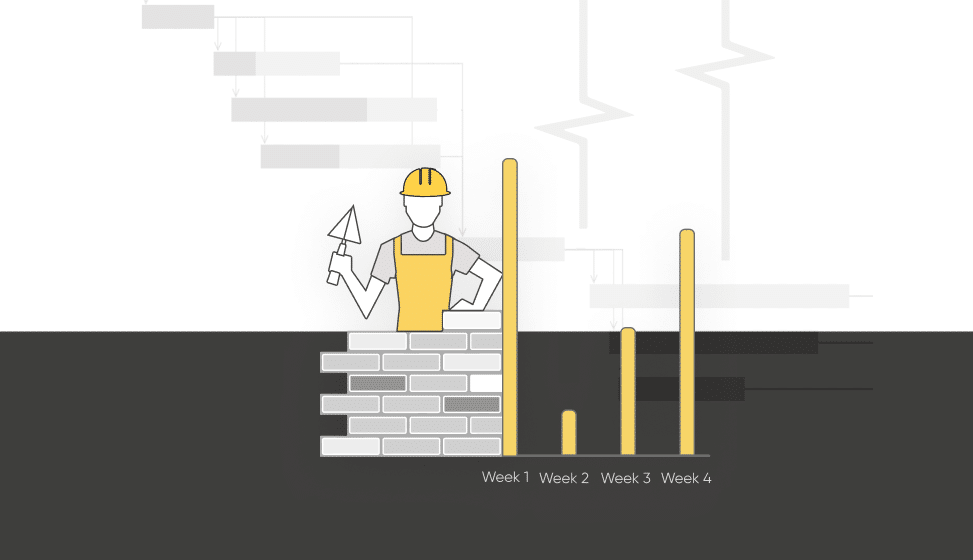Enhancing Project Outcomes The Synergy Between Skilled Managers and Data

We all know that sequencing is a key piece of project management. Make the plan, order the activities, you know the drill. But, while trades and activities need to be scheduled and coordinated with purpose and intention, nothing on a construction site ever goes exactly to plan.
Projects are dynamic. There are unpredictable elements and we often need to roll with the punches and adapt to changes on the fly. Sometimes, the best way to stay on track is to adjust the sequence simply because that’s what the circumstances call for and we can’t predict the future.
What Happens When We Work Out Of Sequence?
When we do have to make the call to work out of sequence, how does this affect the overall delivery schedule? If the initial sequence plan was carefully thought out, how much are we risking that delivery date by deciding to have the electricians start early?
The answers to these questions used to be subjective wonderings, but with advances in process data collection and analysis, we now have access to more concrete answers.
The use of AI-based project tracking software can provide real-time insights into how a project is progressing and how it compares to the master plan. We had the opportunity to examine this type of data from 64 projects worldwide. We looked for trends in how changing the sequencing of activities affected the overall delivery of construction projects, along with identifying other sources of inefficiencies.
When it comes to sequence deviation, we found that work occurs out of sequence an average of 3.6 times. With an overall average of 37 different activities occurring on a job site, that gives us 9.7% of activities deviating from their original sequence.
So much for our thoughtfully developed plan…
How Does This Affect Project Delivery?

Looking at the findings of our study, we found that when a project sees 1-4 sequence deviations, delays are kept to an average of 10%. However, when the number of deviations increases beyond 4, we quickly see a cascade effect of 2.5 times more delays with each deviation. In short, once you have 5 or more activities happening outside the plan, the project begins to spiral out of control.
The most interesting finding, however, was that 0-1 deviations also saw a high occurrence of delivery delays. These projects faced delays just as severe as those with 4 or 5 deviations. So while a well-developed sequence plan is an essential part of project management, sticking to that plan come hell or high water may not be your best bet.
What This Means For Your Next Project
Planning is essential, but flexibility is equally so. When it comes to knowing when to stick to a plan and when to pivot, nothing beats the knowledge and expertise an experienced project manager brings to a construction site.
Technology has come a long way in helping us build our initial sequences and track our progress. Add to that the creative thinking and first-hand experience to know when a plan is no longer the best course of action, and we have a winning combination for success.
Projects need someone who can walk the line between schedule adherence and real-world factors and make the best call on how to keep things moving forward.
Technology gives us accurate, real-time data that keeps project managers up to speed on the facts. By knowing what sequence deviations are occurring and what’s causing them, managers can make better-informed adjustments. This allows for more confident decision-making and knowledge of how a project is progressing.
So, while technology and data can enhance your project outcomes, without a skilled project manager on its side, tech is not enough to successfully deliver a project. We still need our badass PMs out there making the hard calls.
White Paper
The Numbers Behind Inefficient Construction Practices




